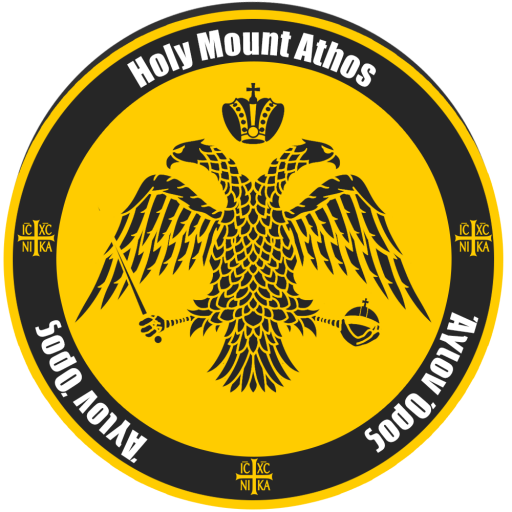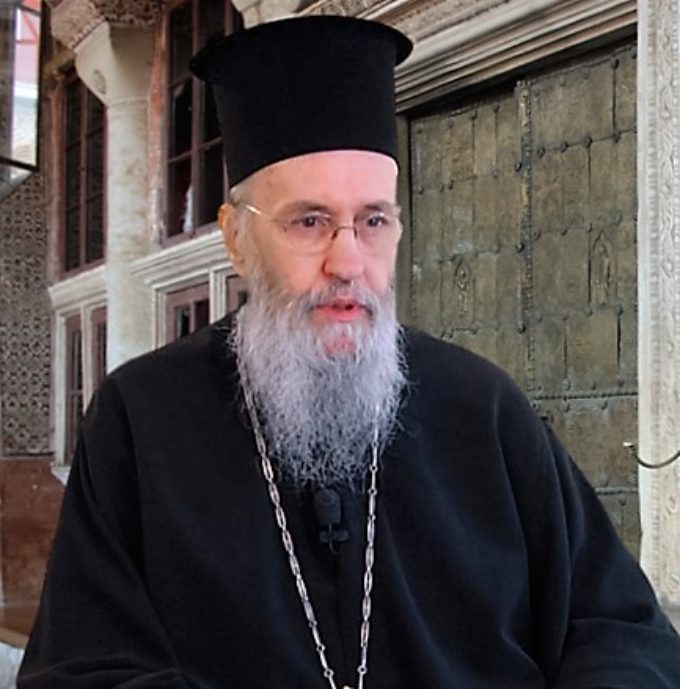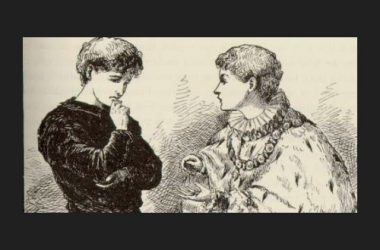Archimandrite Vassilios Bakoyannis
At the beginning of the twentieth century, in the time when the Church was pastured by archbishop Teoclit (+1931) in Greece appeared some people who saw the Cross with the eyes of Protestants, causing problems in the Church, especially in that of Athens.
Archbishop Teoclit appointed the wise metropolitan of Pentapolis, Saint Nektarios (+1920) to combat their heretical teachings. And the Saint, after he had studied the subject from a historical and theological perspective, wrote: The historical study about the Holy Cross.
In this study, the Saint discusses about the great celebration of the Exaltation of the Holy Cross (14th of September). He says that this celebration is linked with the consecration of the Church of the Resurrection, which was made on 13th of September 335. Therefore this celebration was not established in the time of the emperor Heraclius, then it was made its renewal.
Saint Helen, with the blessing of the emperor Constantine, her son, went to Jerusalem in the year 326 for finding the Holy Cross. They finally found the Cross and the three nails with which they nailed Christ. It was on 6th of March 326. The Synaxarium says: “On this day (6th of March) the commemoration of the finding of the Holy Cross by the blessed Helen (…) On this day the commemoration of the finding of the precious nails.”
This event (the finding of the Holy Cross) is celebrated in our Church in the third Sunday of the Great Lent. “Today is great joy in heaven and earth, for the sign of the Cross is made manifest to all the world!” (Triodion, the fourth chant, the Canon of the third Sunday Matins of the Great Lent)
Saint Helen left the horizontal part of the Cross to the local Church from Jerusalem and the vertical part she gave it to her son, the emperor Constantine. She also gave him two of the three nails with which they nailed the Lord. The third nail was thrown in the sea when she returned to Constantinople. The emperor put one of the nails in his helmet and the other one at the bridle of his horse, according to Zechariah: “And it shall be in the harness of the horse, holy of the God Almighty” (14, 20) The nails are on the imperial head adornment and the praise of the authority is found in the harness.” (verses at the Synaxarion from 6th of March)
After this saint Helen went again to Jerusalem and built there the famous Church of Resurrection. On 13th of September 335 it was made the consecration and the wood from the Holy Cross was put in the Church as well. The next day, on 14th of September, the Holy Cross was raised again for being worshipped by the crowds. Since then, in parallel with the feast of the Instauration of the Church of Resurrection it is made the celebration for the Exaltation of the Holy Cross (on 14th of September).
This day was entirely consecrated to the Holy Cross. That’s why when saint John the Chrysostom died on 14th of September 407, his commemoration was moved. “Due to the celebration of the Holy Cross his commemoration was moved in the month of November”, says the Synaxarion (14th of September)
In 615 the Persians occupied Jerusalem and among their other misdeeds – killings, enslavement of Christians – they took the Holy Cross. Thus the celebration of the Holy Cross ceased.
After eleven years, in 626, the emperor Heraclius, after the expedition against the Persians, took back the Holy Cross and at the end of the autumn, in the year 628, he returned to Constantinople with the Holy Cross.
At the entrance in the city there were organized grand welcome festivities in his honor and then they went on procession towards Saint Sophia. The Cross was leading the way, placed on a special carriage, followed by the emperor in his carriage, acclaimed by the thousands of citizens of Constantinople.
On 14th of September 629, the emperor went to Jerusalem to give the Cross to the patriarch Zechariah who had been enslaved by the Persians and freed by the emperor. The emperor with the Holy Cross, the patriarch, the clergy and the people went to Golgotha. There the emperor raised highly the Cross and the crowds knelt down with their heads to the ground, singing for a long time Lord, have mercy.
Then they acclaimed the emperor and sang the national anthem: “God, save your people” and left.
Since then, from the day of 14th of September 629 when it was made the renewal of the celebration, it has been celebrated until today.
Cross of Christ, save us with your power! Amen






